By Andrea Sadowski & Chandy Dancey
I’m convinced that poverty has a distinctive taste: a big bowl of Kraft Dinner and a side of canned baked beans. Being poor and food-insecure unfortunately go hand-in-hand. While low-income countries are usually the center of food insecurity discussions, most people need only look within their own communities if they want to see its effects. According to the Provincial Health Services Authority, food insecurity is recognized as a key public health concern in British Columbia. It’s defined as the inability to access and buy an adequate amount of food to meet your daily caloric intake.
If you have ever felt anxious about how you’re going to pay for groceries until your next pay cheque comes, compromised on the quality of food you’re buying to choose something at a lower price point, or skipped a meal due to not having enough left in your budget, you have experienced some level of food insecurity in your life. You’re not alone; one in ten households in B.C. have experienced food insecurity.
This number is more than just a statistic, though; it has lived experience and real humans behind it. The more human side to the discussion are stories like mine, which aren’t unique or even uncommon. Before attending UFV, I grew up with moderate to severe food insecurity, and it heavily affected my relationship and access to food well into university.
“Moderate to severe” food insecurity sounds like social science jargon. The reality of what this means is that as a kid, I sometimes went to school without a packed lunch, or I’d have the same low-cost lunch for years at a time. (If you’re curious, it was a can of Campbell’s vegetable soup or Chef Boyardee’s ravioli, a Nutrigrain bar, and string cheese.) When I grew older and made my own lunches, if there was nothing else, sometimes a lunch meant a box of crackers. Some of my earliest memories are of riding the bus to the Food Bank with a parent and getting to bring home the groceries. At parties, dinners, and holidays I would stuff my face with as much food as I could, since I didn’t know when I’d get to eat an indulgent meal again. Being food-insecure also meant eating a lot of expired or low-quality foods to get by. Products like milk, egg, and yogurt were considered edible indefinitely in my household. And if a loaf of bread was moldy, we cut off the bad spots and popped it in the toaster. (For anyone who doesn’t know, that’s not safe to do.)
In some less than proud moments in elementary school, my household food insecurity culminated in me stealing lunch food and money from my classmates. Instead of being given empathy, I was punished and sent to the principal’s office where he would have me list all the lunch items my mom packed for me that day. Then, he would call my parents and have them verify the same information. Instead of being helped, I was marginalized and had to explain to my friends why I ate lunch in the principal’s office everyday. I quickly learned that no one wanted a problem child in their class — even if that child was a problem because they were hungry.
Understanding the groundwork of a childhood steeped in uncertainty around food sets the scene for going into university. And it’s not pretty. Entering the post-secondary space, students begin to understand that suddenly food insecurity is normalized, considered inevitable, or even acceptable. We all know the stereotypical student diet of instant noodles and frozen meals. In university, food insecurity warped for me and took on a new form: I realized I was good at starving. Food had always felt optional to me, not a strict guarantee, and I found that in the university landscape it was useful not to spend as much money on groceries. I almost took pride in the fact that I was able to subsist on so little and instead use my money for rent or tuition. I took what I learned in elementary school and didn’t ask for help. Not eating properly felt like a rite of passage as a student, but in truth it was heavily influenced by previous experience being food insecure and an unhealthy culture around student diets. And we can do better.
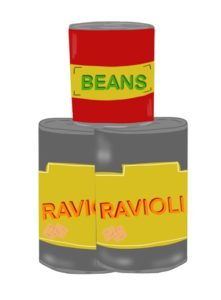
Are UFV students food insecure?
University students have compounding risk factors that make them more likely to be food insecure — the rising cost of tuition, housing and food, paired with the precarious labour market that fails to offset those costs.
A 2020 food insecurity study done by CHASI revealed that 46.3 per cent of students surveyed experienced food insecurity that negatively impacted their academic success in the past year. These results matched with a 2016 study, Hungry for Knowledge, that looked at food insecurity among five Canadian campuses — 49.5 per cent of respondents could not pay for healthy food because of their other essential expenses like rent, tuition, and textbooks. Students are trading their health and wellbeing to afford an education.
Kyle Baillie, executive director of Student Affairs, explained that university students often become food insecure because they regularly need to prioritize spending on non-negotiables in their life, such as rent, books, medical care, and transportation. This means that food, unfortunately, becomes one of those negotiable costs.
“For a lot of students it really is going down to the penny to see how much [food] you can have,” said Taelyr Keeley, food justice supervisor at Archway and UFV alumni. “I know for myself it was like that.”
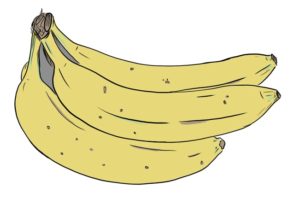
Who is at risk of being food insecure?
Food insecurity is not equitable. Baillie emphasized that students who were food insecure often had intersectional identities and faced multiple barriers. Students who are BIPOC, female, and have dependents, experience more frequent and impactful food insecurity.
Households with dependents, especially single-parent, female-led households, have a much higher prevalence of food insecurity.
Those who rent their homes are much more likely to be food insecure than those who own their homes, with 77.8 per cent of food insecure households being renters.
Most households (76 per cent) that rely on some form of income assistance, be it social assistance, employment insurance, workers compensation or disability, are food insecure. This indicates that social assistance rates need to be increased to sufficiently cover the cost of living.
However, people earning wages and salaries make up 65 per cent of food insecure households. Larissa Kowalski pointed out in the Food Insecurity in Chilliwack Report that “as the nature of work continues to change, so does the impact of low-wage and precarious work, in many cases revealing that being employed or having a job is not sufficient enough to maintain or ensure household food security.”
BIPOC populations, especially Indigenous, Métis, and First Nations households, are disportionately more food insecure than white people. Where just 11.1 per cent of food insecure households in Canada are white, 28.2 per cent of Indigenous people living off-reserve and 50.8 per cent of First Nation people living on-reserve are food insecure. First Nations households also have a lack of access to traditional food sources due to climate change decimating their food systems.
“Look at the history of colonial practices and what we’ve done to the indigenous food supply,” said Kowalski, lead researcher at CHASI.
She pointed out that Sumas Lake was originally a primary food supply for the First Nations who have been living in the Fraser Valley since time immemorial, but the lake was eradicated in order to become agricultural land for settlers.
Recent immigrants and refugees to Canada also lack access to their traditional foods due to low income levels, high food prices, or the inability to find such foods in our grocery stores; this is known as “cultural food insecurity.”
Keeley identified Indigenous, Black, and South-Asian populations as being a demographic that is disproportionately food-insecure in the Fraser Valley, as well as newcomers to Canada.
“Any kind of minority group is the one facing the most food insecurity,” said Keeley. “It’s because our food system [is] very white-based, so a lot of the foods they are used to in their home countries aren’t available here or if they are, they’re way more expensive.”
Contributing factors to food insecurity include the accessibility of large grocery stores and whether or not these stores are within walking distance. If low-income students don’t have access to a car to transport their groceries home, they have to buy less food at a time. These smaller, more frequent grocery runs can ultimately become more expensive than buying food in bulk or large quantities, as well as a drain on student’s time and energy.
“The Fraser Valley is such an agricultural hub,” said Baillie. “But the interesting thing is that the Abbotsford campus is in the middle of what is defined as a food desert, [which] is effectively any region that is more than a kilometre away from provisional resources. There are no grocery stores within walking distance to the Abbotsford campus.”
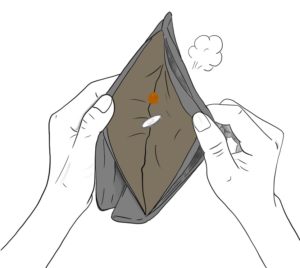
What is food resiliency?
The Food and Agricultural Institute’s 2021 study, Cultivate Connect, states that “food resiliency is understood as the ability to anticipate, endure and recover from economic, political, environmental or other social disruption that impact the food system.” The resiliency of our food systems here in the Fraser Valley will play a crucial role in our community’s food security. Threatened by climate change, extreme weather events, global supply-chain disruptions and economic inflation, our food systems must be able to withstand these ever-looming external threats.
Creating food resiliency means coming up with agricultural innovations and technology that will be able to feed our communities using less crucial resources like land and water. One such innovation is vertical farming, which grows produce on vertical shelves in a controlled environment using LED lights. One such farm that has adopted this technique is Biopod, a joint initiative between UFV, the John Volken Academy, and the City of Surrey. The growing towers in Biopod’s greenhouses are able to produce 14 times the amount of food that would be grown using conventional methods with the same amount of floor space, all while using less energy, water, and pesticides.
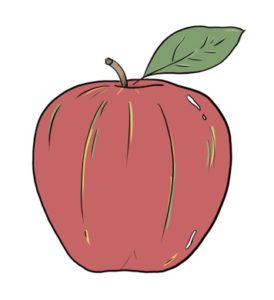
What is food justice?
Food justice addresses not only the food insecurity of individual households, but looks at the systemic inequalities that lie within our food system that keeps people from marginalized communities from accessing nutritious food.
“Our current [food] system is based around white supremacy and white privilege, and the system in itself is unjust,” said Keeley. “With food justice, we’re trying to advocate from those systemic levels and to the most marginalized to recreate the food system to be just.
“Part of our food justice role is looking at where are the gaps in services that Archway is providing through our food bank, and what can we do that’s not just access to food, but it’s having a more just access.”
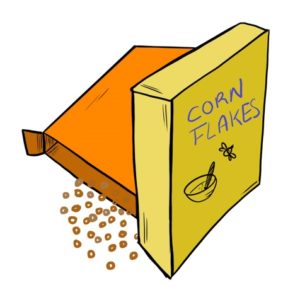
What is being done to ensure food justice in the Fraser Valley?
The UFV-SUS Food Bank
The UFV-SUS Food Bank has been in operation since 2018, and is primarily run by the PRLC coordinator, Ashley Ward-Hall, along with a food bank student assistant. UFV provides the administrative costs to staff the program, SUS provides the space, and Archway provides the non-perishable goods that keep the shelves stocked (since the UFV-SUS foodbank is considered a satellite location of the Archway foodbank). The UFV-SUS Food Bank also receives both food and cash donations from community members. During COVID-19, many staff and faculty donated their parking fees to student emergency funds and the Food Bank. With these cash donations, they filled their shelves with extra necessities through Costco shopping trips. The UFV-SUS Food Bank not only provides non-perishable food items to students, but also includes other necessities such as toiletries, pet food, formula, and diapers.
In the wake of COVID-19, the UFV-SUS Food Bank switched from giving away hampers of food to sending grocery store gift cards to students. While the switch from hampers to giftcards was an agile pivot in a crisis situation, it ultimately is more detrimental to students as the Food Bank has more purchasing power than if each student was to go out and buy their own groceries.
“What we have seen is that the number of students needing support during COVID-19 has gone up very dramatically,” said Baillie. “COVID-19 has not impacted people equitably. It has disproportionately impacted those same groups who were already experiencing food insecurity more frequently and deeply”
The UFV-SUS Food Bank states in their guidelines that they are “an emergency program meant to supplement, not replace, existing supports.” Students can request a food hamper once every seven days and may only request up to six hampers per semester. Since opening in 2018, an average of 150 students per semester receive support from the Food Bank, with most receiving a hamper and/or giftcard three to four times a semester.
As far as demographics go, 65-75 per cent of Food Bank users are international students, approximately 25 per cent have dependents, and 85 per cent of users in the fall and winter semesters are full-time students.
In regards to providing culturally appropriate food to students, Kaylee Lovesy, the Food Bank student assistant, wrote in an email: “Listening to our clients’ requests and trying to fill their hamper according to their culture is very important to us and UFV’s commitment to inclusivity and diversity. Whether this be eating halal or just wanting access to more of a certain ingredient for the dishes they wish to cook, we will always fulfill these requests.”
Archway Food Bank and Food Justice Program
Archway’s Food Bank serves over 4,000 Abbotsford residents, and their Bulk Buy Collective currently has 1,100 members enrolled.
The Bulk Buy Collective is for everyone who needs more affordable access to fresh produce. Once a month, volunteers from within the program help prepare the bags of produce that are composed of around 15 lbs of 9-12 varieties of fruits and vegetables, and members of the Collective pay just $14 a bag. It is a model that incorporates community and food programming.
Archway recognizes that there is a stigma attached to accessing food services, and many people may feel shame or insecurity in their inability to provide adequate food for themselves or their families. They address this concern by keeping their food justice programs as low-barrier as possible by allowing participants to self-enroll, without asking for proof of income, housing, or dependents, like most food banks require.
“We’re decreasing the stigma by making it low-barrier, having translation services available, and working with community members or coordinators who are on the ground to hear what the stigmas are and how we can work to change that,” said Keeley.
Food For All Program
In fall 2021, Dana Hospitality and UFV partnered together to launch a program that sells affordable freezer meals to students. The Food For All Program features a variety of hearty, nutritious meals at a much cheaper price-point than any other meal students could buy on campus.
Gurdwaras
Sikh gurdwaras serving langar, or a communal meal, is another valuable resource in the Fraser Valley community and throughout Canada. One study found that university students from three different Canadian universities said that the food served at langar not only “connects them with the smells and tastes of home, [but] it gives them the comfort of knowing that when they have little money left at the end of a school term, they can always be fed at the gurdwara.”
“Langar kitchens are a cornerstone of food insecurity prevention and action in the Fraser Valley,” said Baillie. “As a community they’ve done amazing things; the question is how do we spread that and make that more accessible.”
Farmers Markets
A tangible way to connect with the local food system is to buy your produce from the local farmers markets that are usually open over the summer, from May until September. Archway Urban Farms, a community garden close to downtown Abbotsford, sells produce at farmers markets during the summer. Urban Farms also educates the community on food literacy as it teaches volunteers how to grow their own food
Baillie told The Cascade that there was an initiative in the works for a year-long UFV farmers market that would aim to keep the costs low for vendors so local farmers can sell produce at affordable prices to UFV students and the greater community.
Chilliwack Free Fridge
Chilliwack Free Fridge, founded in 2021 by two community members, is a “grassroots mutual aid project to increase food access, reduce food waste, and build organized community resources by the people, for the people!” Between late-spring to mid-fall, the fridge is located at 8870 Edwards Street. The fridge is a seasonal project due to not having an enclosed shelter to store the fridge during the colder months. Community members can drop off and pick up donations of fresh produce, bread, eggs, formula, non-perishables, and menstrual and safer sex supplies.
Food hubs
The Chilliwack Community Food Hub was founded in 2021 and it allows all food donations to be stored and processed in one centralized location to ensure efficiency between organizations and to prevent food waste. The food hub features a commercial kitchen, office space, and a food warehouse, and serves up to 9,200 meals a week for Chilliwack residents struggling with food insecurity. The food hub was founded in partnership with three local organizations: Salvation Army, Chilliwack Community Services, and Chilliwack Bowls of Hope
Archway’s Food Justice Program, and is in the process of developing a food hub in downtown Abbotsford that will have a commercial kitchen available for groups to hold community meals and process rescued food. The food hub will also feature an affordable market for people to shop for food at-cost.
The authors of Cultivate Connect envision food hubs to not only provide communal kitchens, but to “be places that provide education about food justice, food sovereignty, decolonization, poverty reduction, anti-oppression, and can promote community leadership through participant-led projects.”
What’s next: addressing structural inequalities
We must address the structural and systemic inequalities that cause food insecurity and food injustice in the first place. One way we can do this is by working towards writing and revising food policies to ensure equitable access to sustainable food systems.
Neither Abbotsford nor Chilliwack currently has any sort of food policy devised to ensure food justice for all its residents. These municipalities could benefit from some sort of overarching food strategy, like the City of Vancouver has, to make nutritious food accessible to all and ensure a sustainable, resilient food system here in the Fraser Valley.
Addressing structural issues involves working primarily at a provincial and federal level to address the income-inequality faced by these households that are most likely to be food insecure. Municipalities can only do so much when the root of food insecurity lies in household income.
The direct cause of food insecurity is simply not having enough money to buy food.
Raising the levels of household income by increasing minimum wage to a living wage, and by ensuring social assistance matches the cost of living, could be the most effective way to eliminate food insecurity. In short, if you have more money, you can buy more food.
This is what makes food insecurity a social justice issue more than anything else. It is so intimately linked with issues like workers rights, affordable housing, and access to transportation, that you cannot talk about one without addressing the others.
Are you hungry?
“There is no embarrassment in being hungry or in asking for help,” said Baillie. “If there are any readers who need help or who are struggling to make ends meet, come talk to us. Whether that [means] applying for a hamper from the food bank or an emergency grant from financial aid or any number of resources. There are lots of ways that we can help, but if we don’t know, we can’t help.”
If you are experiencing food insecurity in some way, reach out to any of the resources listed above.
Images: Niusha Naderi / The Cascade


